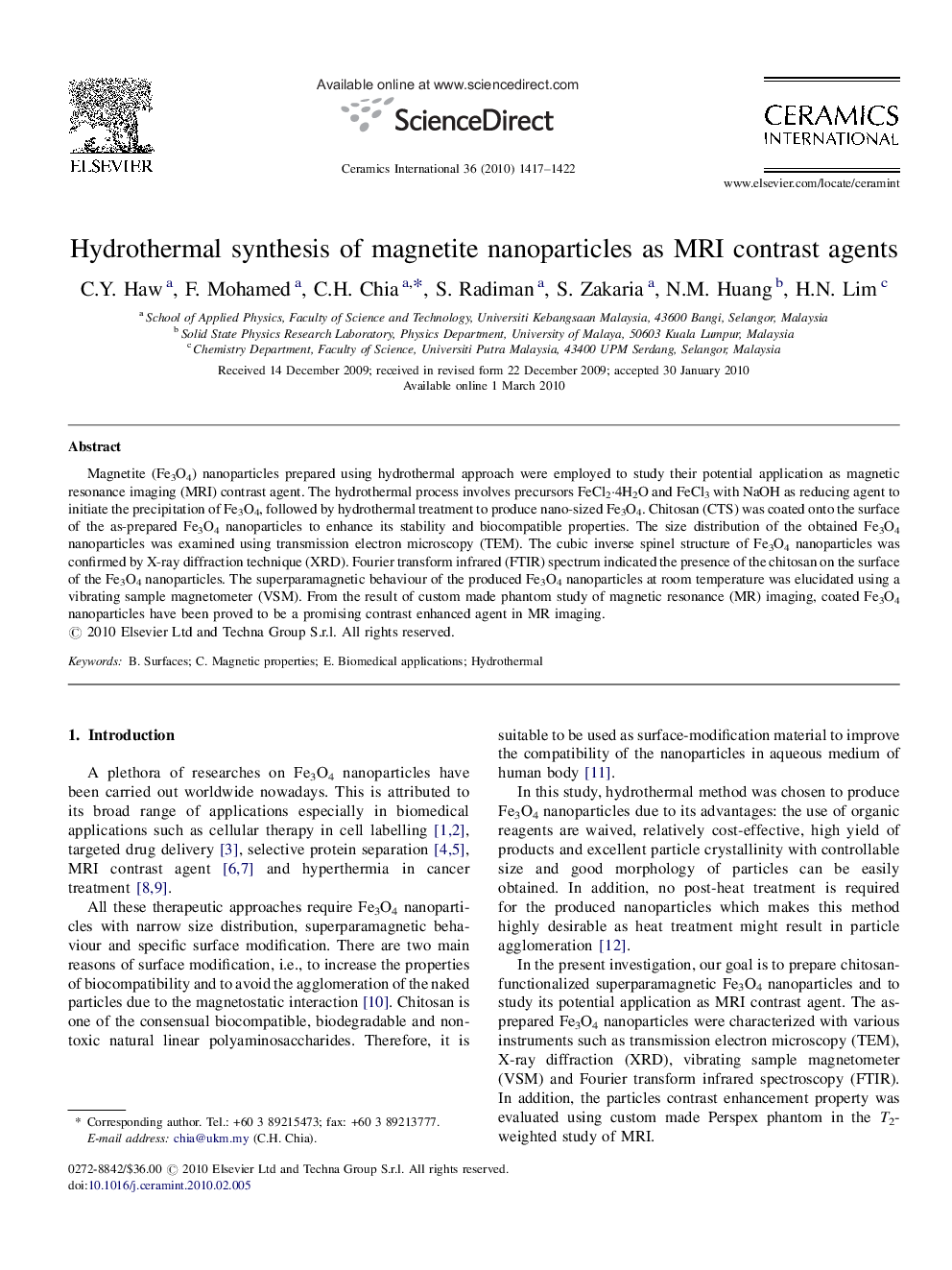| Article ID | Journal | Published Year | Pages | File Type |
|---|---|---|---|---|
| 1463939 | Ceramics International | 2010 | 6 Pages |
Magnetite (Fe3O4) nanoparticles prepared using hydrothermal approach were employed to study their potential application as magnetic resonance imaging (MRI) contrast agent. The hydrothermal process involves precursors FeCl2·4H2O and FeCl3 with NaOH as reducing agent to initiate the precipitation of Fe3O4, followed by hydrothermal treatment to produce nano-sized Fe3O4. Chitosan (CTS) was coated onto the surface of the as-prepared Fe3O4 nanoparticles to enhance its stability and biocompatible properties. The size distribution of the obtained Fe3O4 nanoparticles was examined using transmission electron microscopy (TEM). The cubic inverse spinel structure of Fe3O4 nanoparticles was confirmed by X-ray diffraction technique (XRD). Fourier transform infrared (FTIR) spectrum indicated the presence of the chitosan on the surface of the Fe3O4 nanoparticles. The superparamagnetic behaviour of the produced Fe3O4 nanoparticles at room temperature was elucidated using a vibrating sample magnetometer (VSM). From the result of custom made phantom study of magnetic resonance (MR) imaging, coated Fe3O4 nanoparticles have been proved to be a promising contrast enhanced agent in MR imaging.
